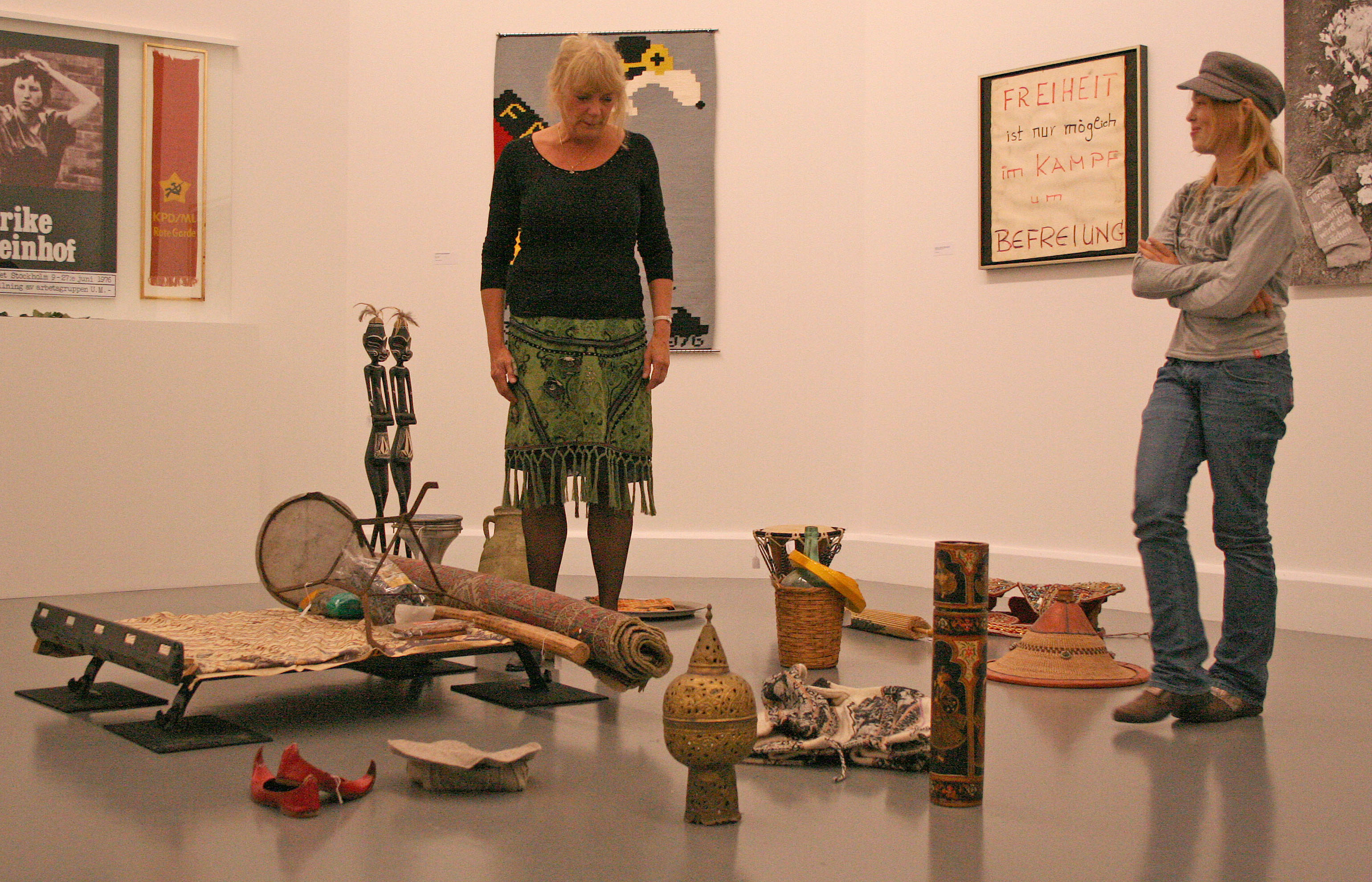 The Museum Night, organised by the Van Abbemuseum, took place last Saturday night. This 4th edition was connected to the project Be[com]ing Dutch. Visitors were encouraged to find out how the diversity of Holland can be connected to art. Everybody who was not afraid to be confronted with situations that excite the senses and trigger emotions could walk around in the museum for free. Children and adults of all ages took part in workshops and went to see performances given by a diversity of artists.
The Museum Night, organised by the Van Abbemuseum, took place last Saturday night. This 4th edition was connected to the project Be[com]ing Dutch. Visitors were encouraged to find out how the diversity of Holland can be connected to art. Everybody who was not afraid to be confronted with situations that excite the senses and trigger emotions could walk around in the museum for free. Children and adults of all ages took part in workshops and went to see performances given by a diversity of artists.
*Take my hand to travel back in time and cross the van Abbe once more*
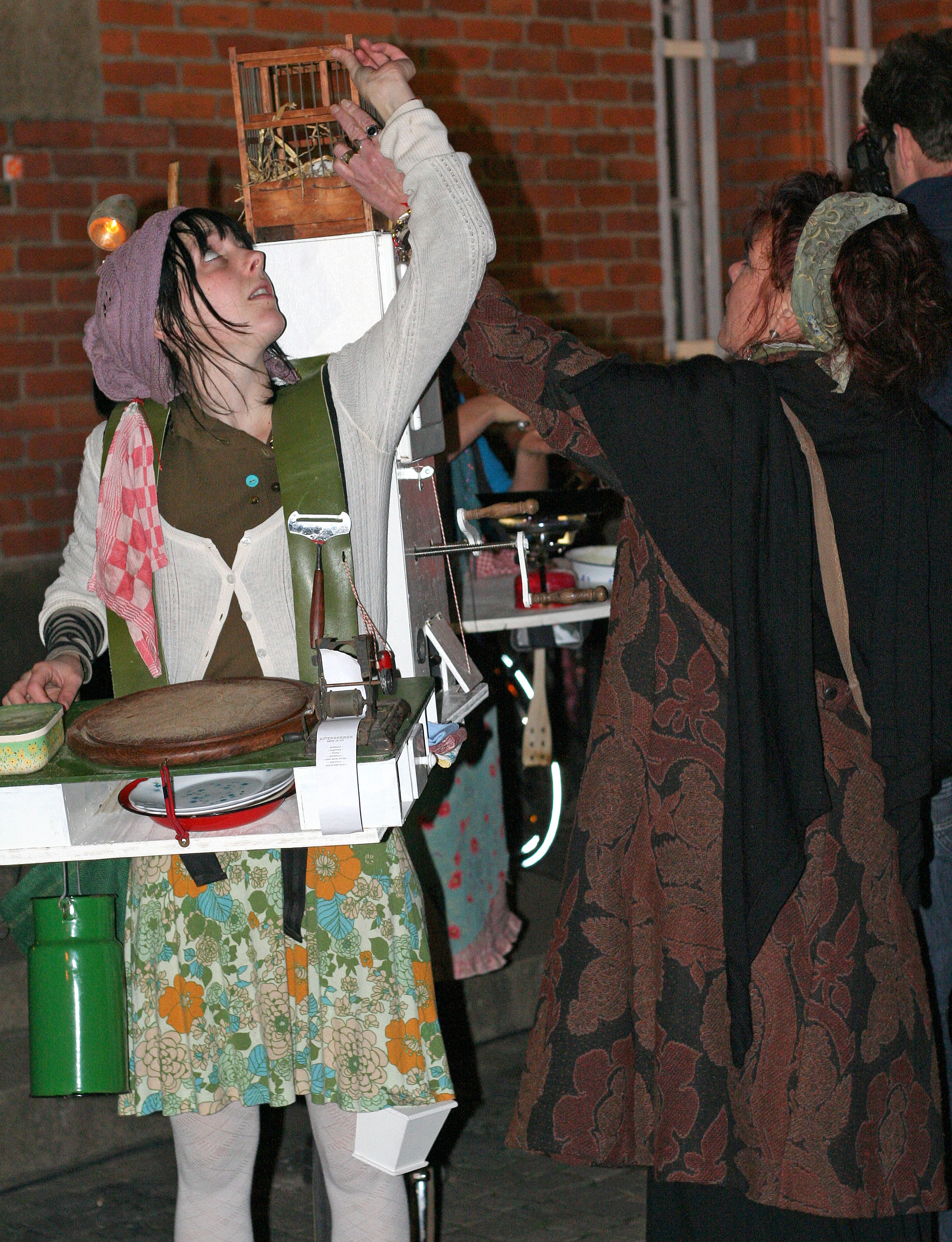
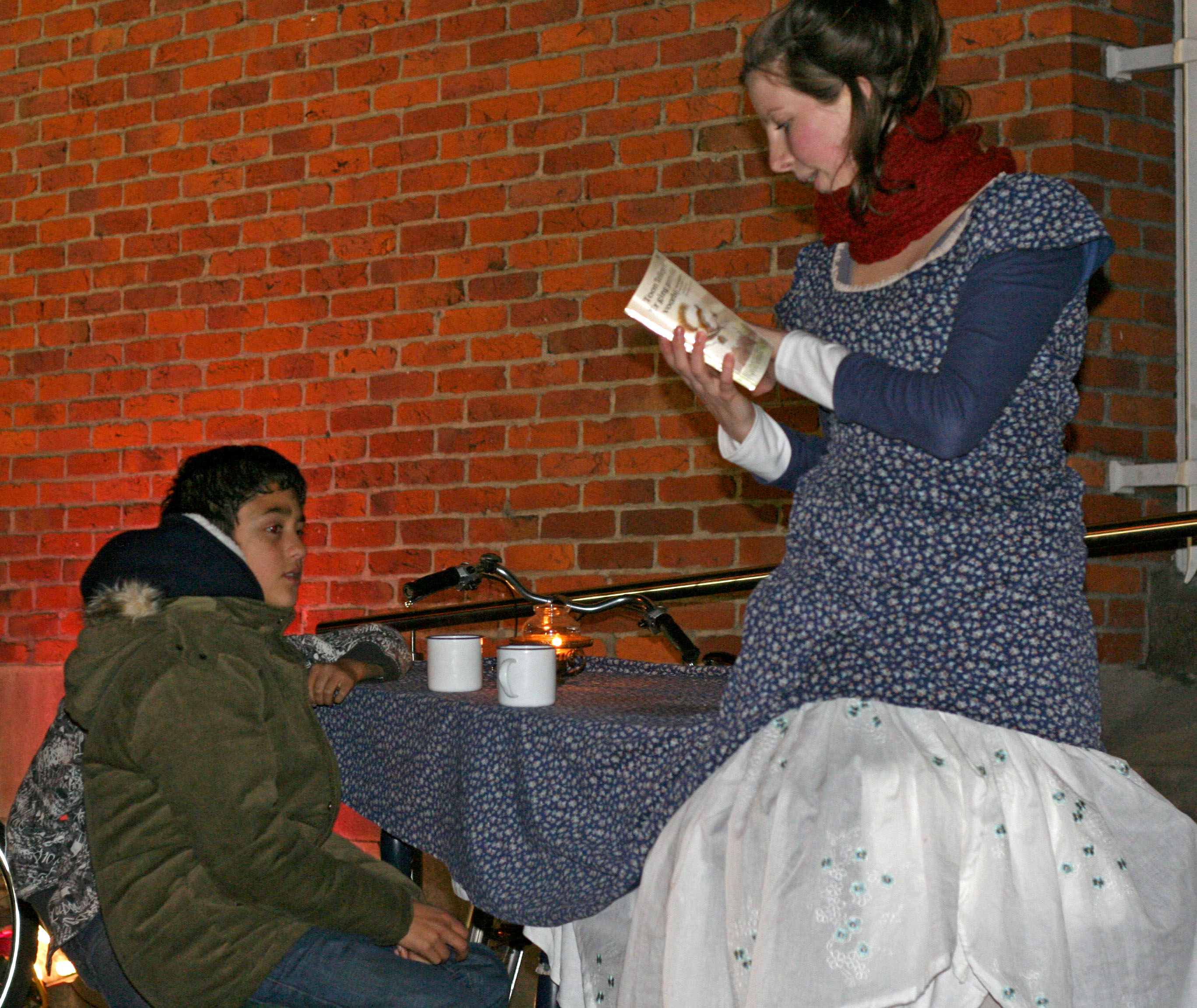
We just climbed some stone stairs and now we are standing in front of the entrance of the van Abbemuseum. Our hands are cold and vapour is escaping from our mouths, vanishing into the cold night. A cheerful girl welcomes us: ‘Would you like a sandwich with chocolate sprinkles?’ Of course.. ‘Than can you please open the cupboard on my back and take the ingredients? If you find any crumbs you can feed them to my mouse…’ Next to us two boys are enjoying a hot chocolate. The table they are sitting on starts reading them a story in a Limburg Dutch dialect.
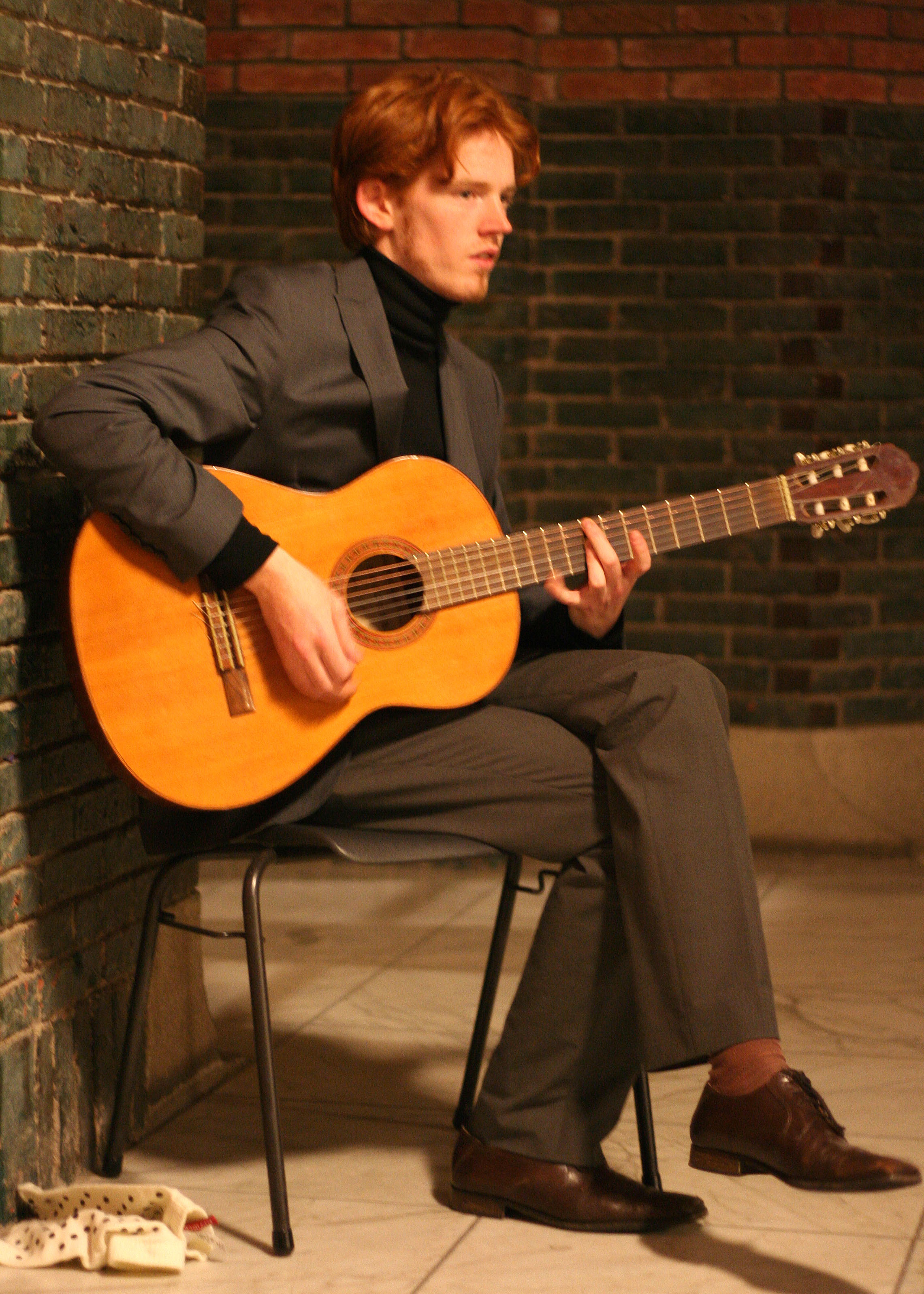
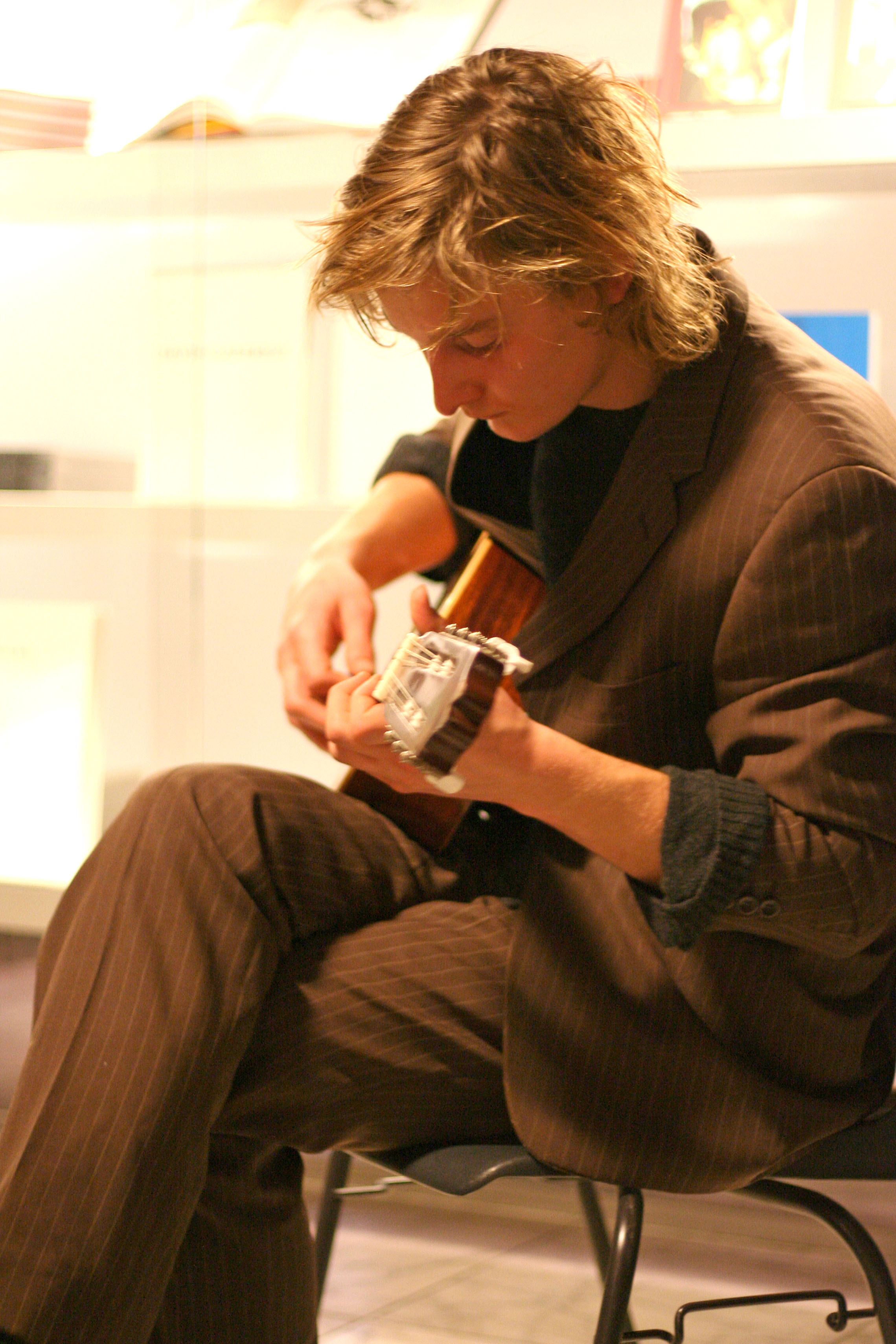
After consuming our sandwiches we enter the building. In the passage that leads to the reception-room we find two musicians filling the space with guitar music and singing. We enjoy it even though it takes us just a few seconds to pass by.
Once inside we decide not to look at the program that was just given to us by a host. We’ll go anywhere the wind will blow us. Even if there is no wind because we’re indoors. Soon we find ourselves standing still in the hallway, staring at an artist who is modelling the face of a visitor in clay. Her name is Efrat Zehavi. She works concentrated and fast but somehow also manages to keep a conversation going with the women sitting in front of her. ‘When I start working I enter some sort of state of high concentration and I forget about the people standing around looking and talking about us. Tonight I will create three sculptures, than I can do no more. I once tried to do four in one night but it did not work. At some point I am just spent.’![]()


We walk on and enter a room where several children are busy painting ‘creative self-portraits’. Triënette Stevens explains to us: ‘I lead the children’s art club together with Silvia Koomen. Right now the kids are creating expressive images of themselves. We were inspired by the Chilean wall painting, which you can find one floor above us in the Museum. Right now there is a workshop called ‘eating in the dark’ there so you won’t be able to see it. The painting consists out of defined pieces. We encourage the children also to paint themselves in an abstract and expressional kind of way.’
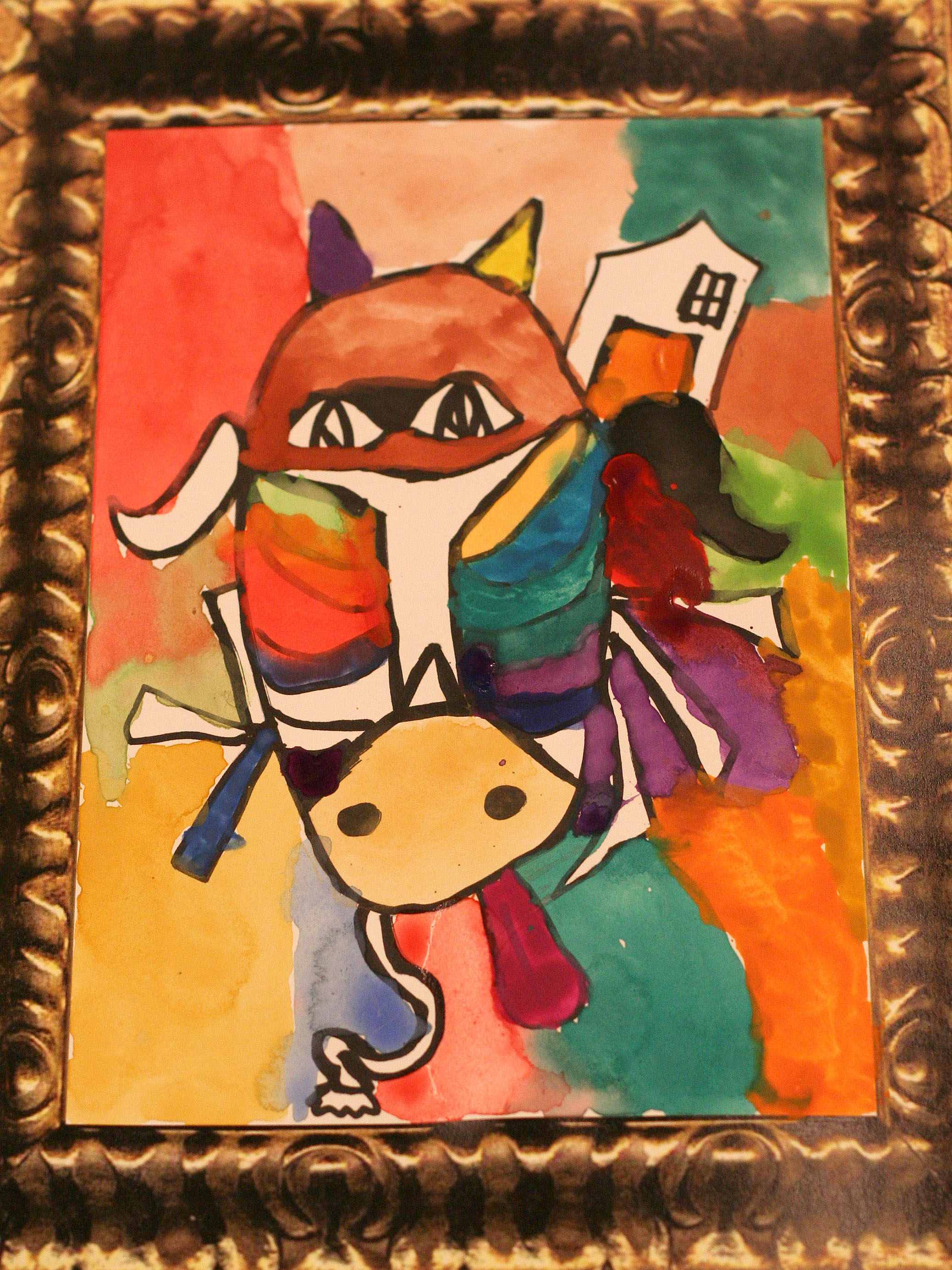
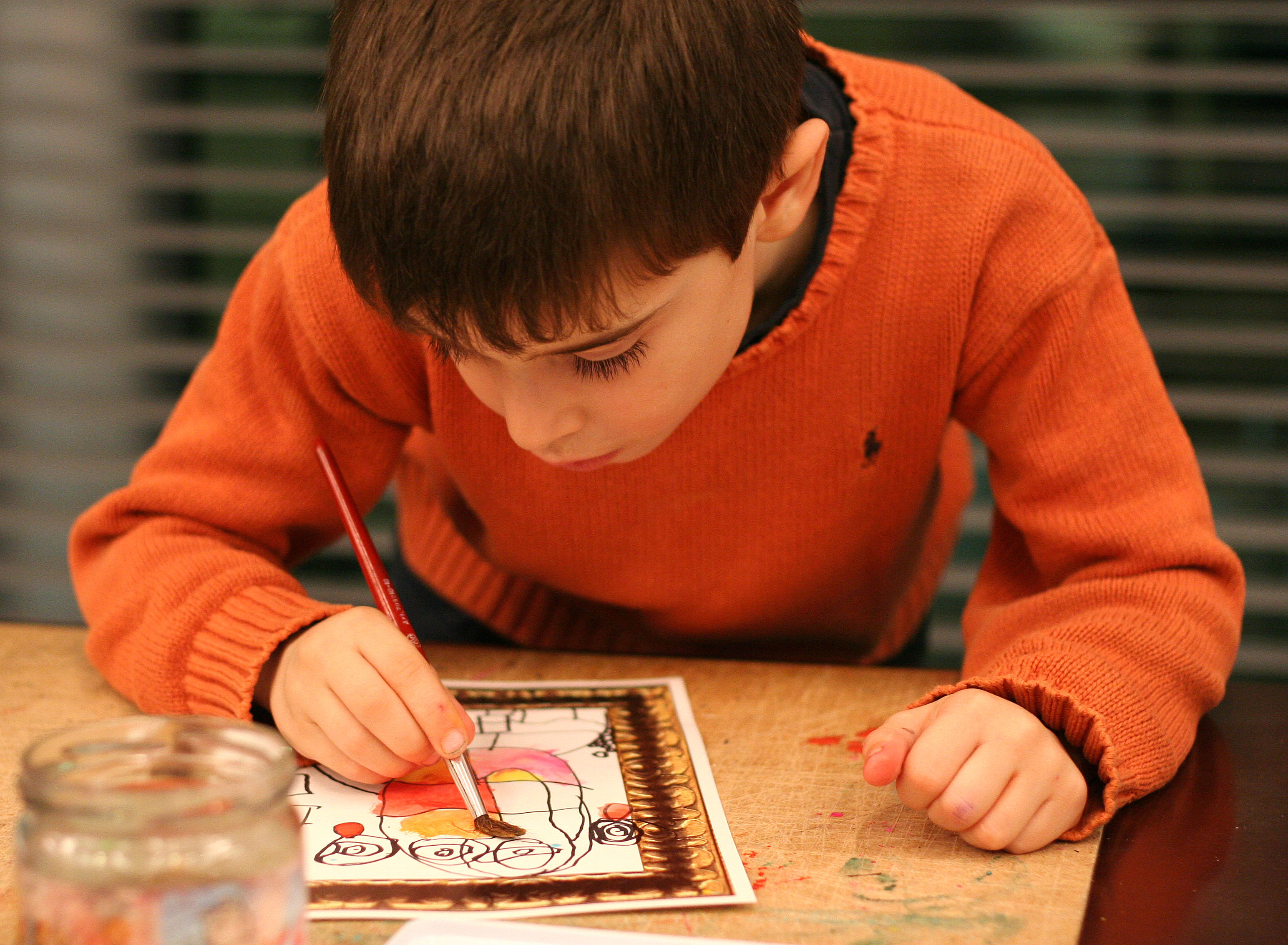 We find out there are more activities for children and take a peak in the auditorium, where nine children are sitting on stage in a circle, chattering loudly. A young lady starts speaking to regain order: ‘Okay, let’s do it one more time. Run around in slow motion… Yes… No… Slow motion means moving slooooowly, like this… Don’t go too fast because you are wearing tights and we don’t want to slip and fall, do we? Okay… And now we are going to hide.’ One of the kids looks at her astonished: ‘But where are we going to hide? Can we go off the stage?’ His teacher answers without laughing: ‘No, we are going to hide in a theatre kind of way, remember? Let’s make three of you trees, than the others can hide behind them. Well, who wants to be a tree?’
We find out there are more activities for children and take a peak in the auditorium, where nine children are sitting on stage in a circle, chattering loudly. A young lady starts speaking to regain order: ‘Okay, let’s do it one more time. Run around in slow motion… Yes… No… Slow motion means moving slooooowly, like this… Don’t go too fast because you are wearing tights and we don’t want to slip and fall, do we? Okay… And now we are going to hide.’ One of the kids looks at her astonished: ‘But where are we going to hide? Can we go off the stage?’ His teacher answers without laughing: ‘No, we are going to hide in a theatre kind of way, remember? Let’s make three of you trees, than the others can hide behind them. Well, who wants to be a tree?’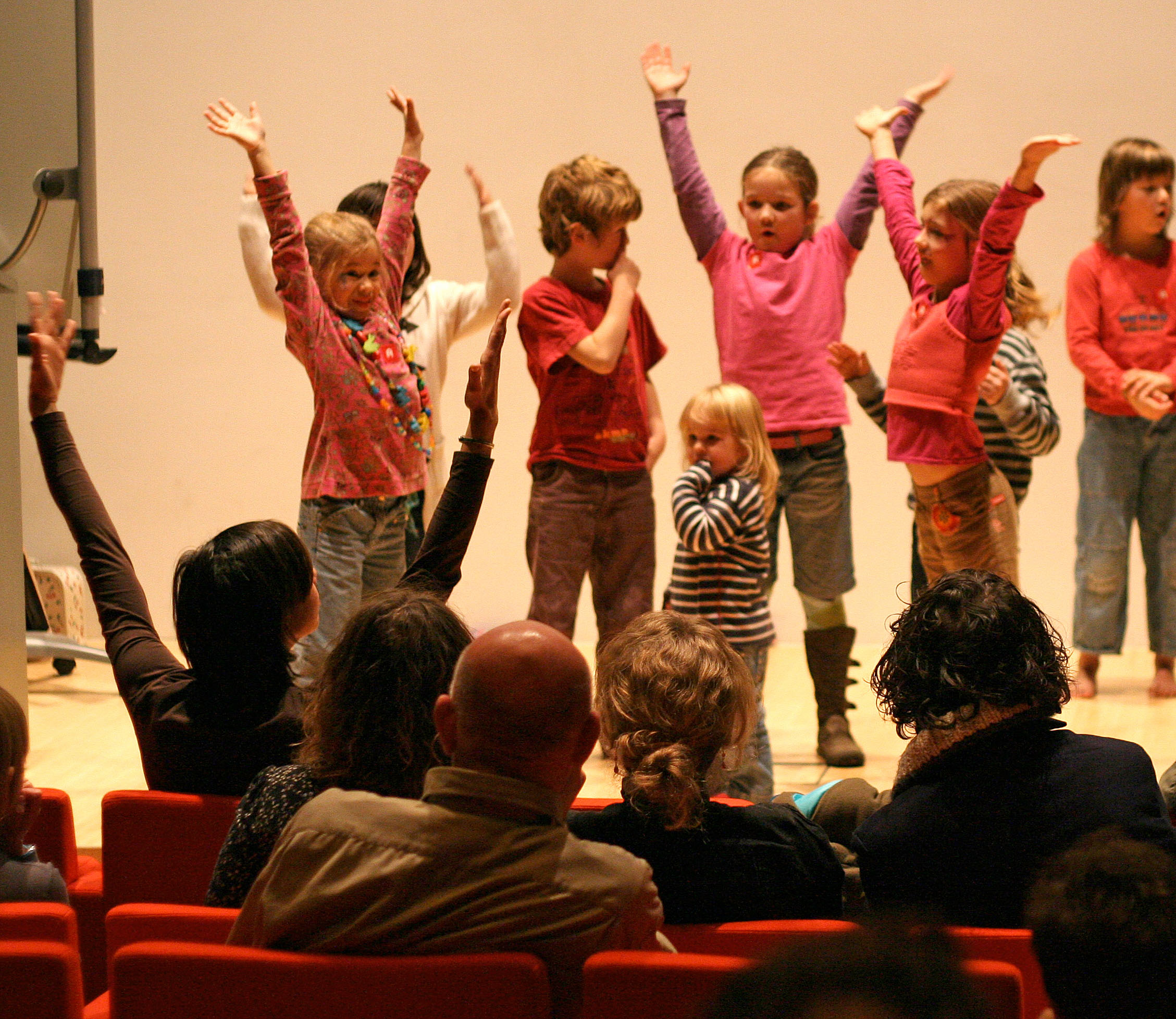
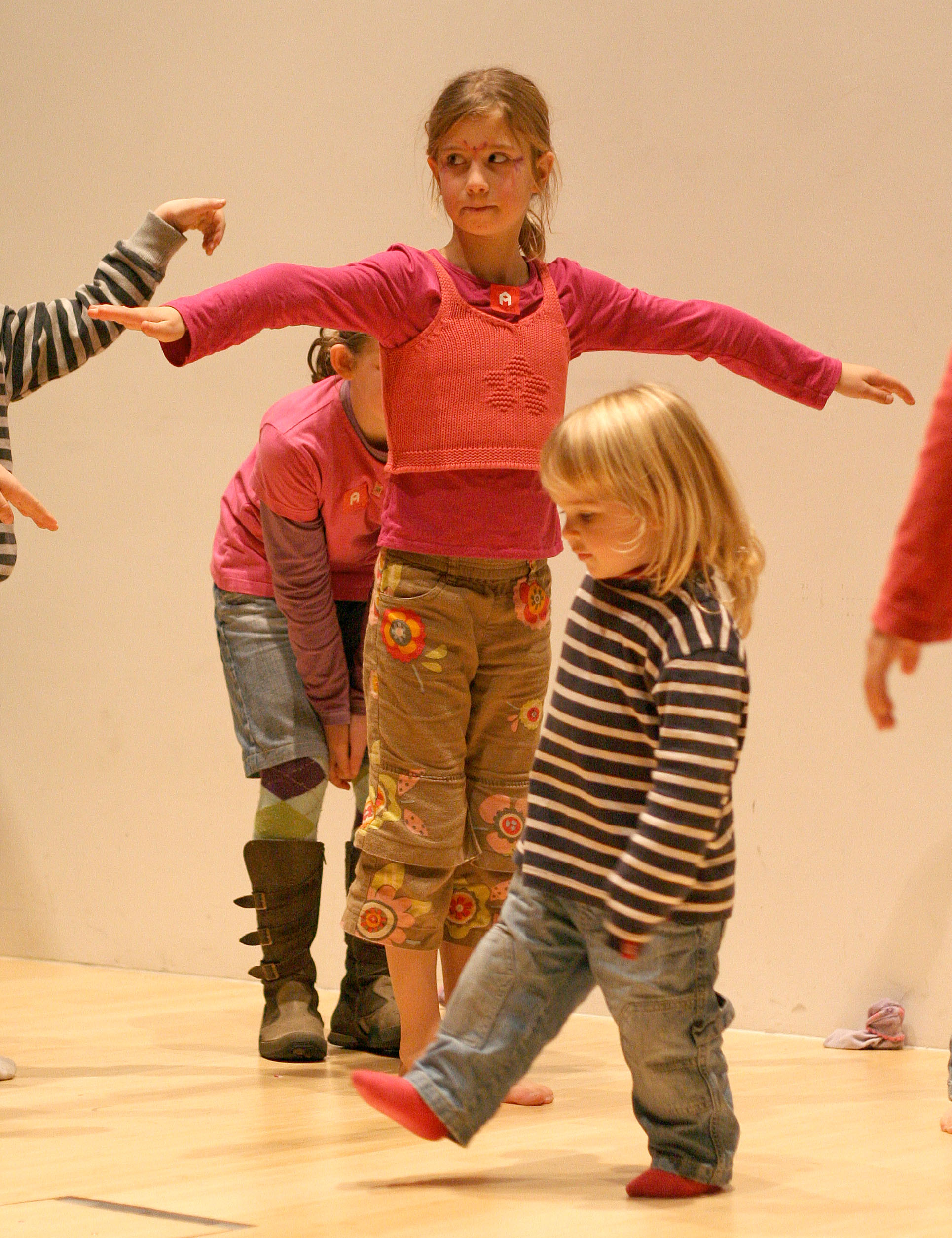
We have been observing the proceedings on stage for five minutes when parents start arriving. They have come to see their children perform. ‘Ooow, the mummies and daddies have arrived. Everybody take your starting positions!’ The young teacher turns to the audience: ‘Welcome everybody! The kids are going to portray some Dutch games and songs and it is up to you to guess which ones.’
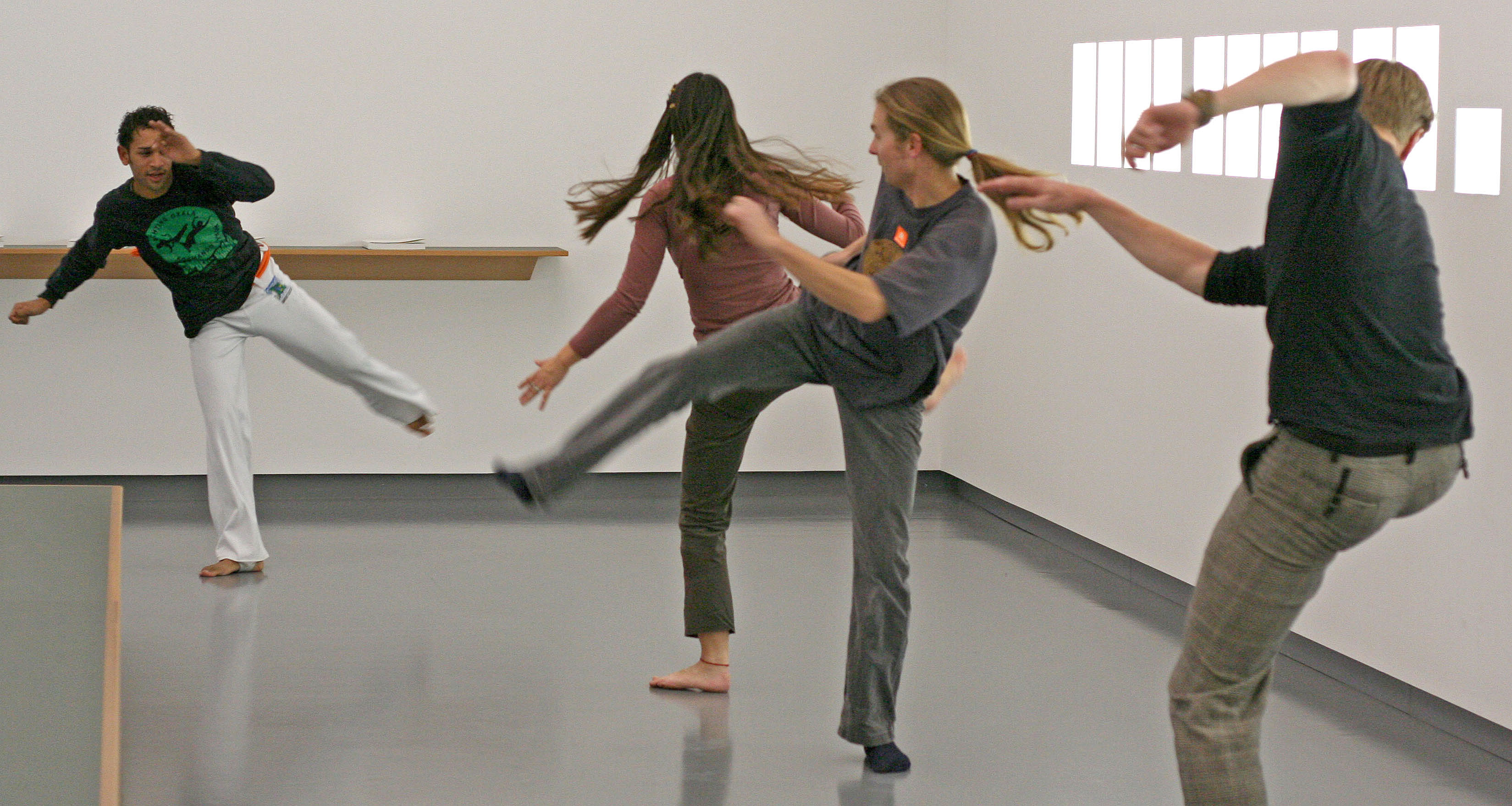 The wind (or is it airco?) leads us away from the auditorium and blows us into the next hallway, where two capoeira ‘maestres’ are explaining what to do to a group of visitors with orange stickers on their chests: ‘We will now do an au. You might not know what that is but when I show it to you, you will
The wind (or is it airco?) leads us away from the auditorium and blows us into the next hallway, where two capoeira ‘maestres’ are explaining what to do to a group of visitors with orange stickers on their chests: ‘We will now do an au. You might not know what that is but when I show it to you, you will recognise the movement immediately.’ And he is right. All spectators understand what an au is when he simply does a cartwheel in front of their eyes. ‘With this movement you will later on enter the ‘rhoda’, that is a circle of people in which capoeira is practicised. You sit down in crouched position opposite your contestant, whose hand you touch. When you let go of each other’s hand you make an au. After this you show all the capoeira moves you have learnt today.’
recognise the movement immediately.’ And he is right. All spectators understand what an au is when he simply does a cartwheel in front of their eyes. ‘With this movement you will later on enter the ‘rhoda’, that is a circle of people in which capoeira is practicised. You sit down in crouched position opposite your contestant, whose hand you touch. When you let go of each other’s hand you make an au. After this you show all the capoeira moves you have learnt today.’
Watching capoeira makes us hungry. We follow some people who are going to participate in a sushi workshop. ‘Unfortunately the sushi they make is to be eaten by the creators only’, the teaching cook tells us when we arrive, ‘but if you go to the museum café you can buy some if you want to. And of course you are free to watch us make it.’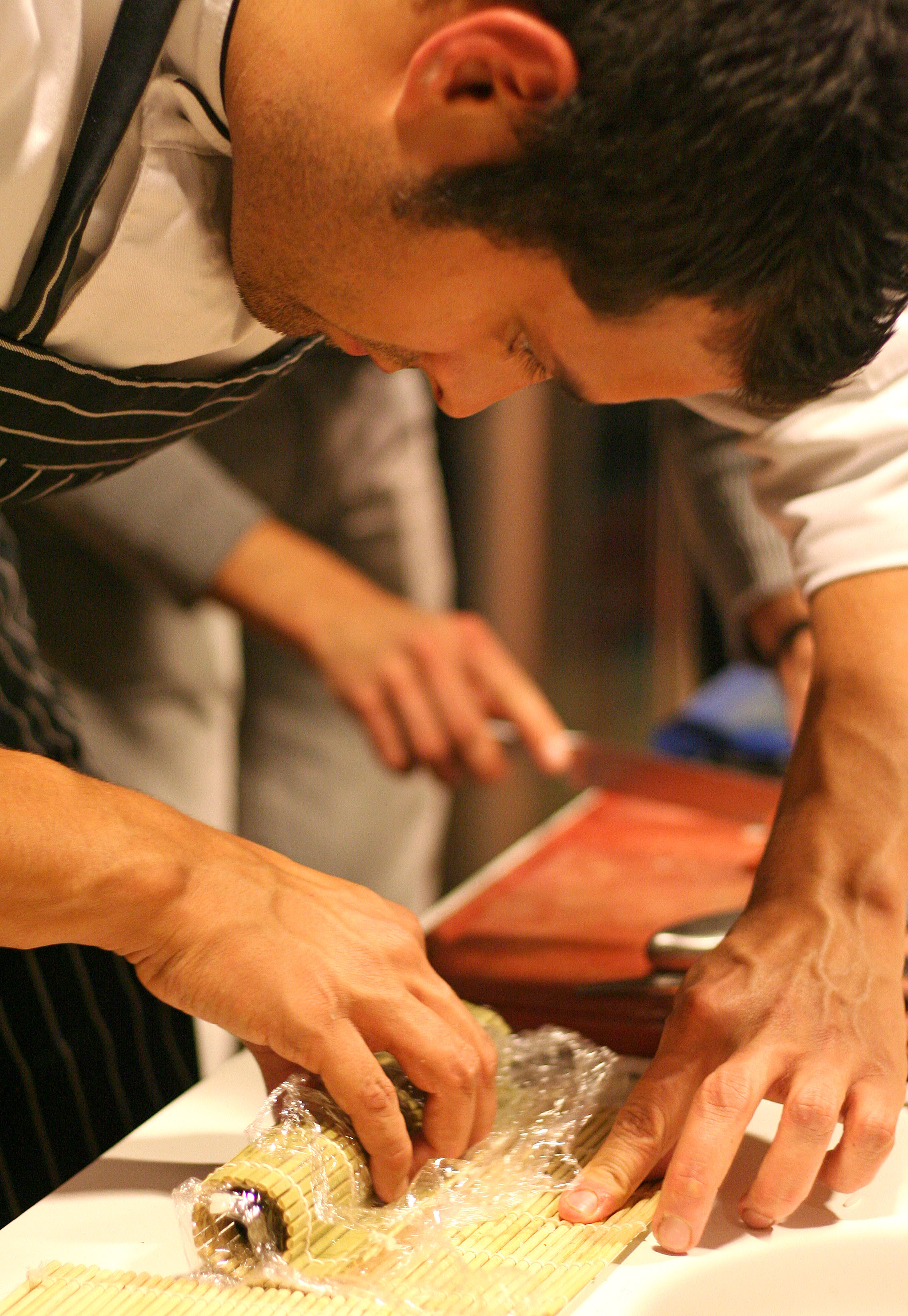 We stay and watch the sushi makers do their neat job. The results are nice, we wouldn’t even consider eating a piece of it now that we have seen the results. To us one roll looks much more like a tiny little piece of art than a handful of food.
We stay and watch the sushi makers do their neat job. The results are nice, we wouldn’t even consider eating a piece of it now that we have seen the results. To us one roll looks much more like a tiny little piece of art than a handful of food.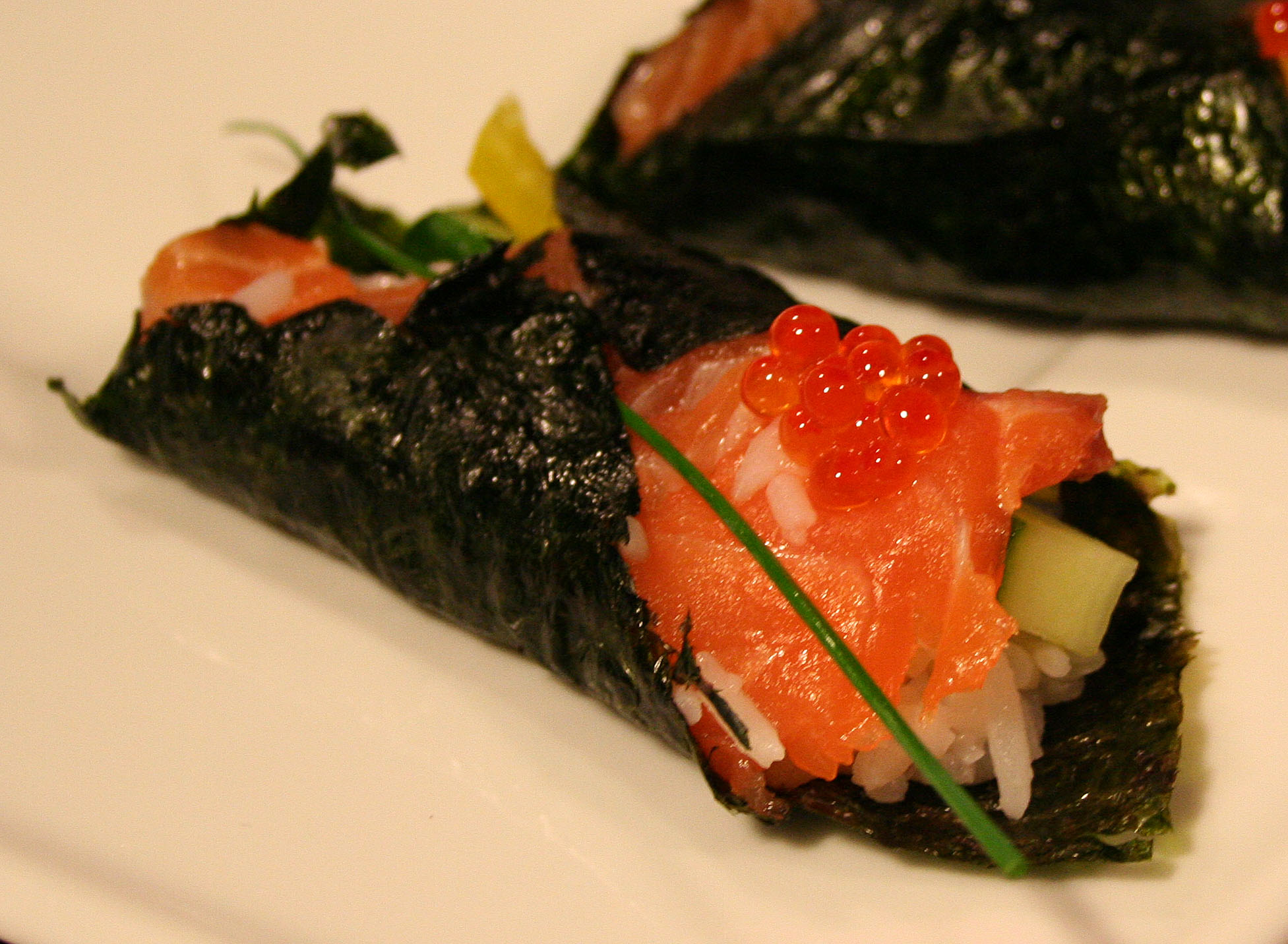
A few walls away Marijke Overbeek is creating another piece of art with the help of visitors. Everybody brought an object and she is now organising them on a rack. All of the objects together represent the multicultural diversity in Holland. We see a Chinese lamp, Turkish slippers, Dutch cheese and somebody brought statues from Ghana.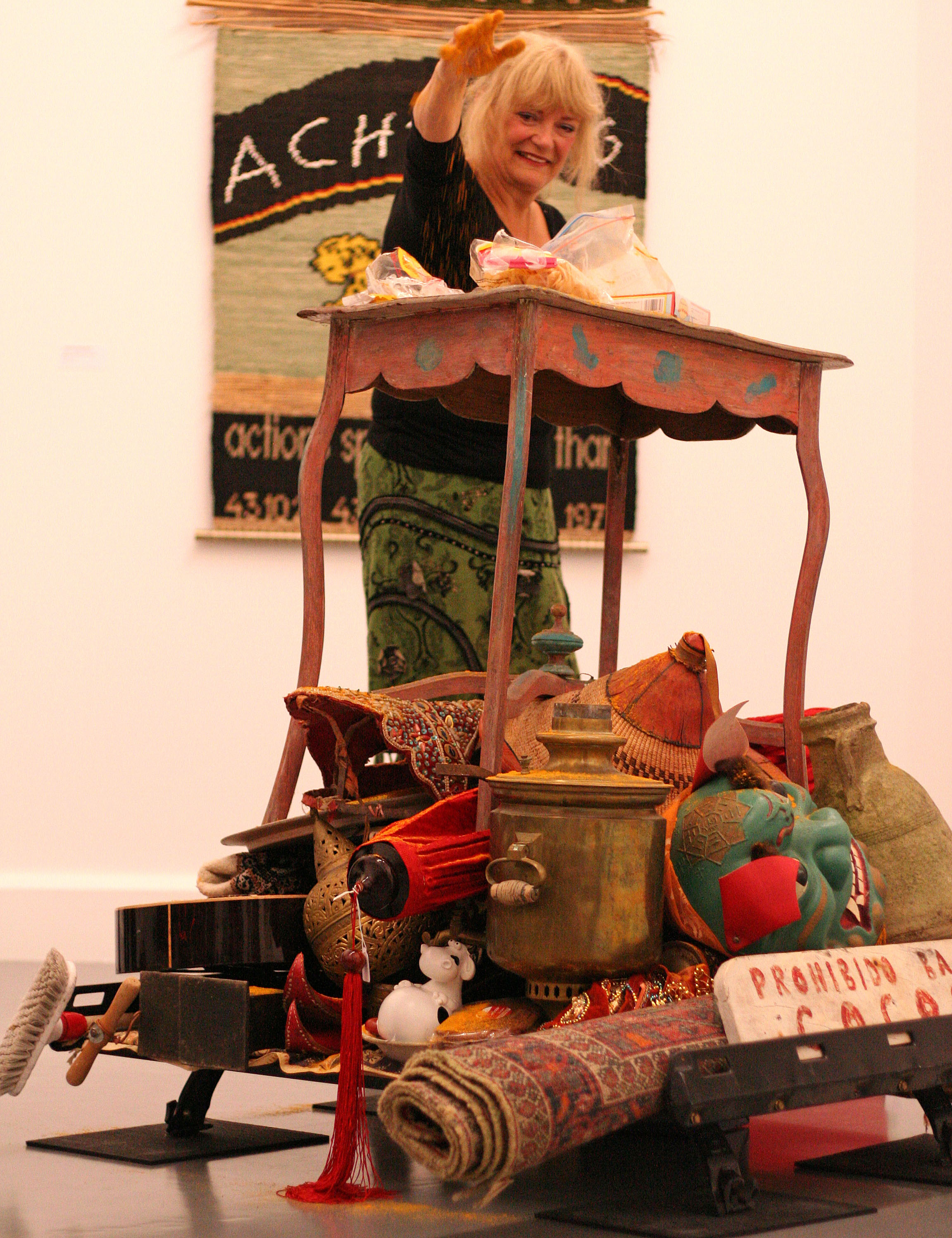 Marijke explains: ‘When I was younger my parents used to take me on holidays in an old Honda car. The whole family had to fit in and because of this there was no space left to take any possessions. Of course we could not leave without clothes and food, so what did we do? We put everything on top of the roof. Everybody in the neighbourhood could see what we were taking to our destination and what we brought back. At the time there were many people from other countries like Turkey working and immigrating to the Netherlands. They also brought things from and to their home countries. Together we caused an international exchange of goods.’
Marijke explains: ‘When I was younger my parents used to take me on holidays in an old Honda car. The whole family had to fit in and because of this there was no space left to take any possessions. Of course we could not leave without clothes and food, so what did we do? We put everything on top of the roof. Everybody in the neighbourhood could see what we were taking to our destination and what we brought back. At the time there were many people from other countries like Turkey working and immigrating to the Netherlands. They also brought things from and to their home countries. Together we caused an international exchange of goods.’
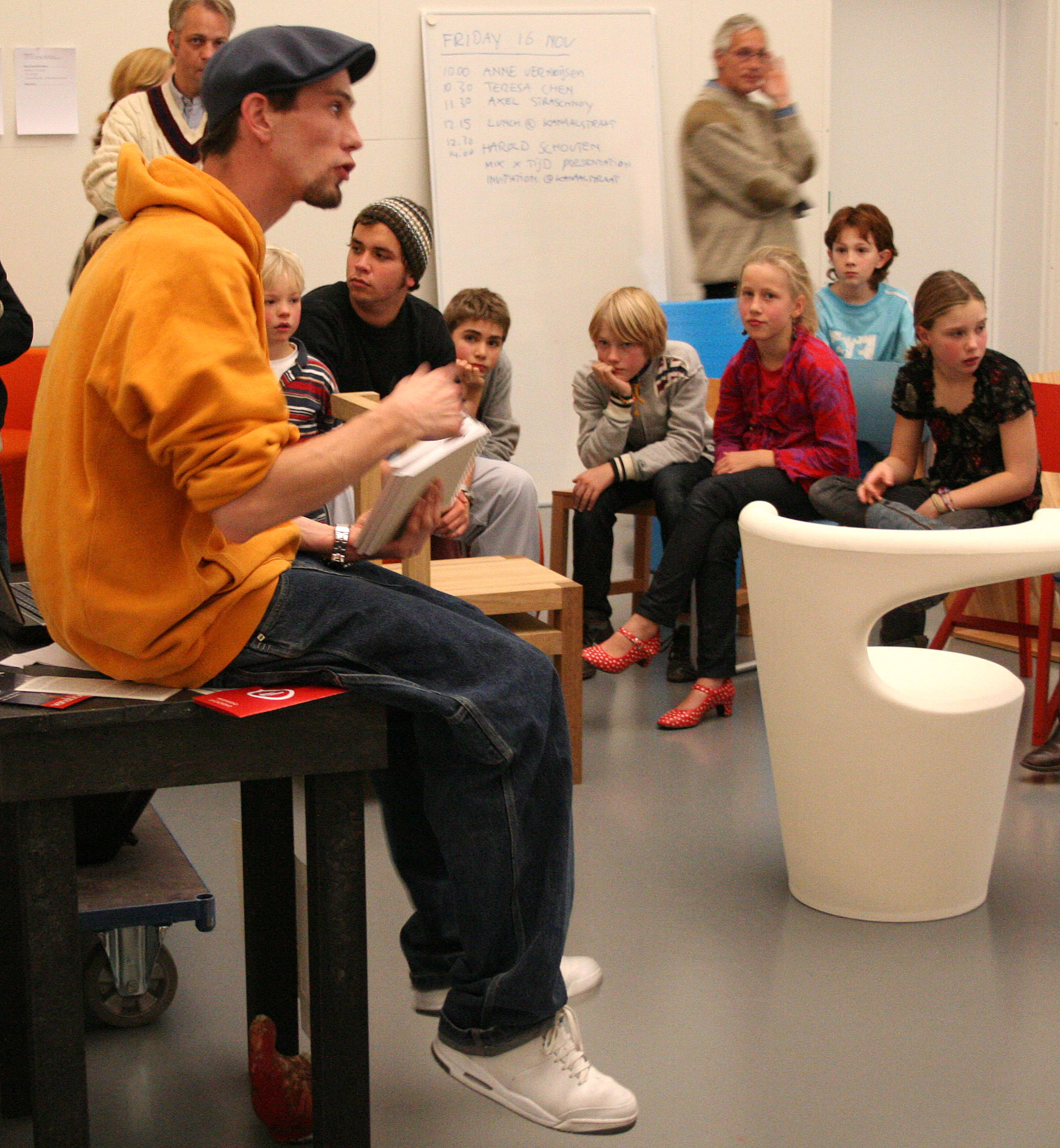 It’s late already and we want to go home. On our way to the exit we meet Justus. He is busy convincing a group of youngsters that rapping is not as hard as is seems. ‘The first words are the most difficult to come up with. But once you have those it’s not so hard anymore. Let’s try it together. I write down a word on this paper and you come up with another word that rhymes.’ While the children rhyme away we stroll to the exit.
It’s late already and we want to go home. On our way to the exit we meet Justus. He is busy convincing a group of youngsters that rapping is not as hard as is seems. ‘The first words are the most difficult to come up with. But once you have those it’s not so hard anymore. Let’s try it together. I write down a word on this paper and you come up with another word that rhymes.’ While the children rhyme away we stroll to the exit.